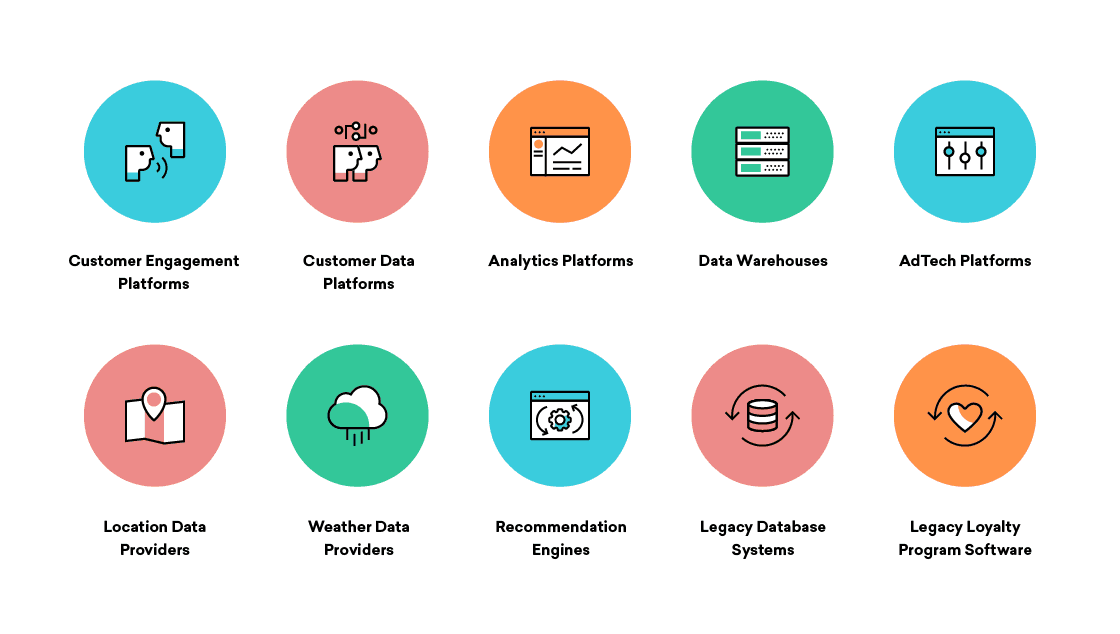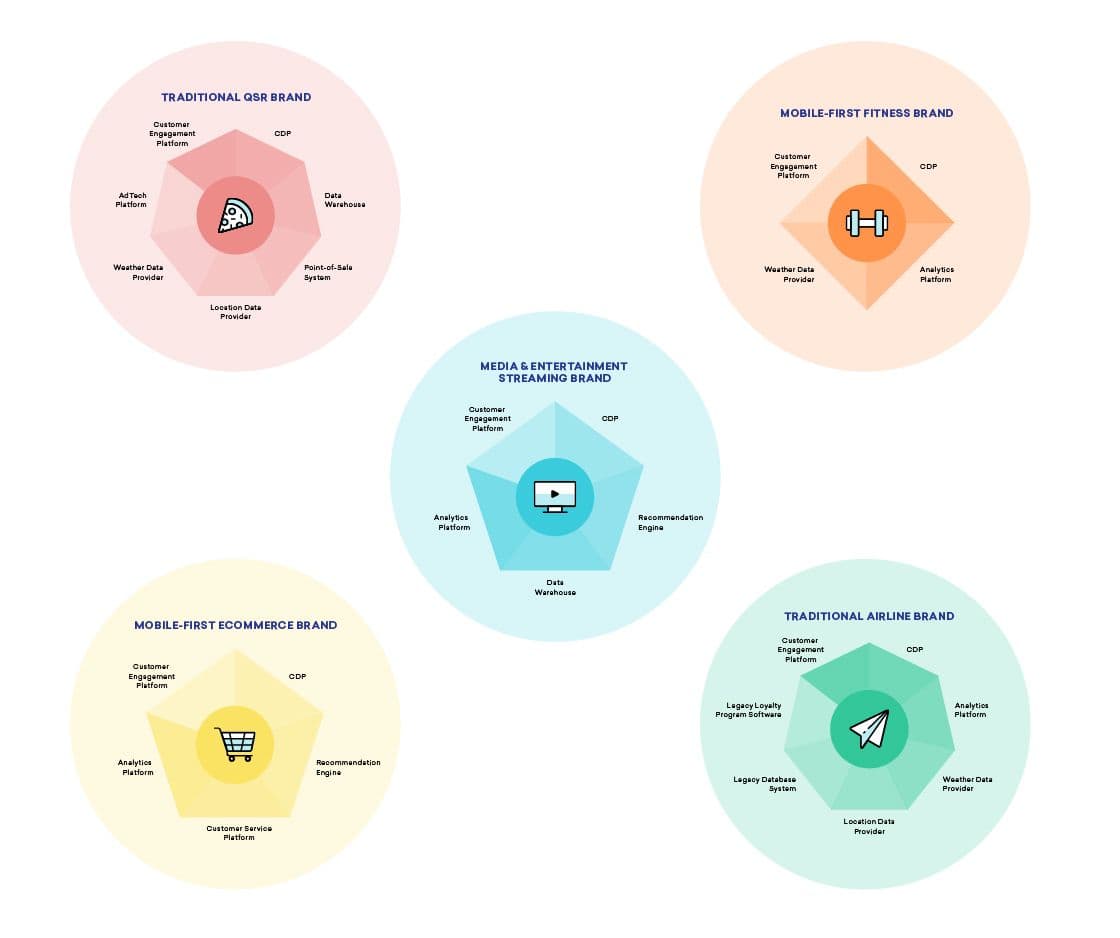Building a Modern Customer Engagement Stack
A customer engagement stack is a collection of linked technologies that make it possible for a company to reach, engage, retain, and monetize their audience
Today’s consumers have serious expectations.
They take for granted that when they order a product, they’ll be notified the moment it ships, and receive updates about the package’s expected arrival time, delivery confirmation and special offers to get them to place their next order. When they stream a show on their smart TV and then switch to watching on the smartphone in bed, they expect the app to know not just what show they were watching, but where in the specific episode they were…and to be able to pick up right where they left off. And when they make a charitable donation, they expect a thank-you message—not just a general announcement asking them for their support.
For the organizations running things behind the scene, it hasn’t always been easy to create this kind of seamless, personalized customer experience—one that’s responsive to individual behaviors and actions without treating customers like a homogenous group. But with the rise of modern customer engagement technology stacks, the process has become more doable and more straightforward for a wide range of brands.
What Is a Customer Engagement Stack, Anyway?
At its core, a customer engagement stack is a collection of linked technologies that make it possible for a given company to reach, engage, retain, and monetize their audience. These stacks are built to combine together the best of customer engagement technologies—including data analytics, location and personalization tools, and engagement technologies—to allow brands to power end-to-end customer journeys seamlessly, within one collaborative ecosystem.
One distinct technology may provide behavioral data, one separate system may be responsible for storing the data, and another may generate customer rewards based on the behavioral data, with each serving a distinct, unique purpose. To truly power in-the-moment customer engagement, however, there is one thing all customer engagement stack components must have in common: They must be able to speak to each other and share data and insights back and forth—in real-time.
The Building Blocks of Modern Customer Engagement Stacks
Gone are the days of finding one vendor or platform that handles everything when it comes to your customer engagement strategy. Instead, smart brands are leveraging as many specialized offerings as needed to orchestrate their company’s unique approach to marketing and engagement. Today’s modern customer engagement stack consists of technology systems highly tailored to the individual brand and nuanced customer needs.
For example, a company might take advantage of some or all of the different technologies listed below…
Common components of a customer engagement stack

…to handle key functions and needs associated with their specific marketing and customer engagement approach. We often see specific combinations of tools on an industry level, where many companies are looking to leverage technology to reach similar goals.
Industry-specific customer engagement stacks

But while specific marketing stack components will vary, any brand that wants to communicate effectively with their customers in the moment in a way that matches up with each individual user journey needs to invest in two key capabilities: Customer engagement platforms and analytics platforms.
Analytics + Customer Messaging = Effective Real-Time Lifecycle Engagement
In order to effectively speak to consumers across the user lifecycle, marketing, growth, and engagement teams have to be able to understand consumers’ preferences and behaviors in a nuanced way and then use those insights to customize their brand experiences. To make that happen, brands need to have behavioral analytics and customer messaging technologies that can work in tandem to power unique real-time, user-driven customer-lifecycle driven, cross-channel marketing campaigns.
What does that look like? Well, when brands use the Braze customer engagement platform in conjunction with behavioral analytics from Amplitude, they’re able to take the engagement data collected by Braze and use Amplitude to dive deep into that data to pull out key insights that can help demonstrate the impact of their efforts and drive more effective campaigns in the future.
“As a marketer one of the biggest things you need to be able to do is measure the effectiveness of your campaigns and follow the user journey,” said Keana Noons, lifecycle program manager at fitness and wellness platform MINDBODY. To make that a reality for her company, Noons turned to Amplitude and Braze, creating key customer segments with the former and deploying corresponding targeted outreach with the latter—and tracking the performance of these new efforts thanks to both. “Being able to create the cohort we want to target, automatically sync that to Braze, launch the desired campaign then go back into Amplitude to further analyze is imperative.”
The ROI of Investing in Modern Customer Engagement Stacks: Positive Customer Experiences
A well-designed customer engagement stack can do a lot to help eliminate silos between teams and systems. In addition to making internal teams’ and customers’ lives easier, modern customer engagement stacks create seamless customer experiences, resulting in happy customers who are more likely to be engaged—that translates to stronger results and higher customer lifetime value.
For inspiration as you explore what to include in your company’s customer engagement stack, take a peek inside the solutions powering IBM’s end-to-end customer experiences, with this recorded webinar.

Mary Kearl
Freelance Digital Strategist
Mary Kearl is a writer and digital strategist who has led email, social media, and content marketing for several brands. She has helped launch six mobile apps and one niche social network and is always up for a good Netflix/Hulu/Amazon Prime binge recommendation or travel tip.
More from Mary




